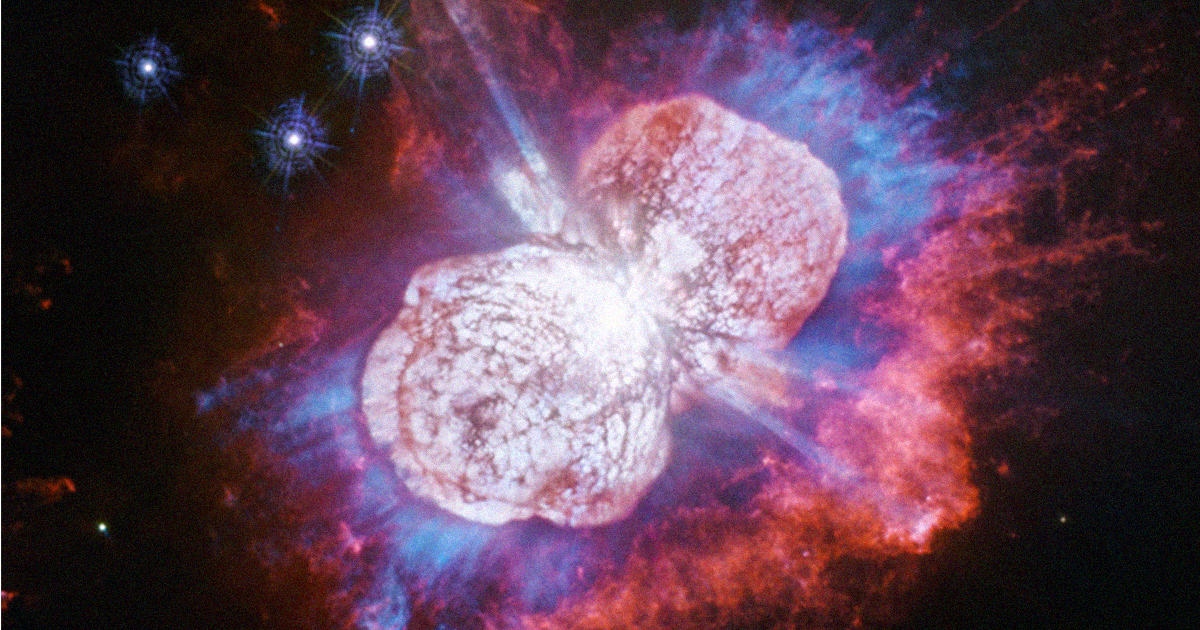The images' greatness goes well beyond their beauty.
Explosions in the Sky
Roughly 7,500 light-years away from Earth is a double star system called Eta Carinae. In 1838, one of the system's two stars underwent a near-death experience astronomers dubbed the "Great Eruption," and for nearly two centuries, scientists have been watching the stunning aftermath of that event.
On Monday, researchers from NASA and the ESA released new photos of Eta Carinae captured by the Hubble telescope — and the most extravagant Fourth of July firework display can't hold a candle to this cosmic one.
The Big Show
The new images are Hubble's highest resolution photos of Eta Carinae, and they provide a remarkable view of the star system's expanding gases, which glow in a holiday-appropriate red, white, and blue.
The cosmic fireworks aren't just notable for their beauty, either, according to researcher Nathan Smith.
"We had used Hubble for decades to study Eta Carinae in visible and infrared light, and we thought we had a pretty full account of its ejected debris," Smith said in a press release. "But this new ultraviolet-light image looks astonishingly different, revealing gas we did not see in either visible-light or infrared images."
READ MORE: Hubble Captures Cosmic Fireworks in Ultraviolet [ESA]
More on Eta Carinae: What’s the Biggest Star in the Universe? Depends on Your Definition of “Big”
Share This Article
